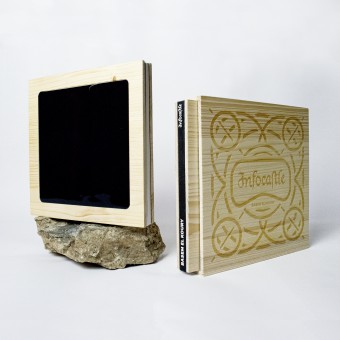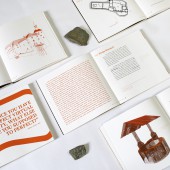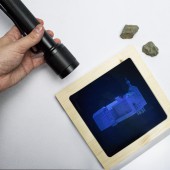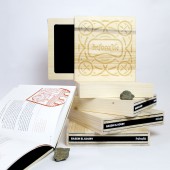Infocastle Thesis Book by Basem El Koury |
Home > Winners > #86810 |
 |
|
||||
| DESIGN DETAILS | |||||
| DESIGN NAME: Infocastle PRIMARY FUNCTION: Thesis Book INSPIRATION: The thesis is covering the importance of digital preservation of cultural and natural heritages with the usage of Virtual Reality (VR). Therefore, the thesis was bound in a style that reminds the reader of the look of an old book, with the elements of minimalism and simplicity in the design. UNIQUE PROPERTIES / PROJECT DESCRIPTION: The book is a master thesis about the project of a VR 3D simulation of the castle "Oberkapfenberg OPERATION / FLOW / INTERACTION: As soon as the reader picks up the book, s/he will notice the fine balance between nature and technology. When the reader hold the wooden book to a light source, s/he will see the rendered version of the castle in the black square, which is the hologram. By the slightest rotation of the book, the reader will see the castle from each perspective. PROJECT DURATION AND LOCATION: The project started in September 2017 in Graz (Austria) and finished in Mai 2019 in Graz (Austria) and it was for the master's thesis. FITS BEST INTO CATEGORY: Graphics, Illustration and Visual Communication Design |
PRODUCTION / REALIZATION TECHNOLOGY: For the VR simulation of the castle, all information (plans, paintings, photographies, etc.) had to collected used for the reconstruction. A user will be able to see and walk in the castle in its original state as it was in the time of the Renaissance. The thesis binding is made from the wood of a tree, that originated from the forest where the castle was built. To make the front cover fitting to the concept of the project, a hologram of the 3D castle was made. SPECIFICATIONS / TECHNICAL PROPERTIES: The thesis is a 200 mm x 25 mm x 200 mm printed book with a 206 mm x 36 mm x 211 wooden slipcase. TAGS: VR, book, 3D, simulation, hologramm, wood, diploma, castle, oberkapfenberg RESEARCH ABSTRACT: Historical relics disappear due to natural and human causes. Therefore, Virtual Reality is a suitable solution to render those as real as possible as a digital form. This diploma thesis explains in detail which methods are available, which make it possible to digitally preserve these relics or to rebuild them virtually using documents. The Diploma is accompanied and explained by a 3D simulation, built by the author himself, of the castle Oberkapfenberg at the time of the Renaissance. CHALLENGE: I had to learn 3D (Blender), the game engine (Unity3d) and the techniques of VR from the first day I started the project. Moreover, I needed to collect all information about the castle Oberkapfenberg to be able to recreated as original as possible. To receive that specific wood and the hologram for the project was nearly impossible. ADDED DATE: 2019-05-09 20:18:36 TEAM MEMBERS (1) : IMAGE CREDITS: Basem El Koury, 2019 |
||||
| Visit the following page to learn more: http://bit.ly/3bkMkt3 | |||||
| AWARD DETAILS | |
 |
Infocastle Thesis Book by Basem El Koury is Winner in Print and Published Media Design Category, 2019 - 2020.· Press Members: Login or Register to request an exclusive interview with Basem El Koury. · Click here to register inorder to view the profile and other works by Basem El Koury. |
| SOCIAL |
| + Add to Likes / Favorites | Send to My Email | Comment | Testimonials | View Press-Release | Press Kit |







